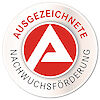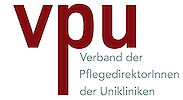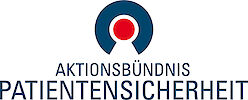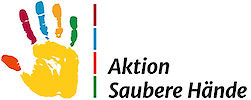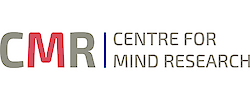Anxiety and Anxiety Detections
"No one has to explain oneself for fear!"
What is fear?
Fear is a normal feeling. It warns us to be more vigilant and helps us to mobilize our forces and to take protective measures. The body also gives the alarm: the muscles tense up, the heart beats faster and stress hormones are distributed. After surviving danger, the anxiety reaction resounds and relaxation turns on. But where is the border between normal anxiety and anxiety disorder? As soon as fear strains our emotional world, dominates our daily lives and paralyses our ability to act, a medical clarification should be made, because such fears can be signs of anxiety disorder or expression of another mental or physical Illness.
What are anxiety disorders?
Anxiety disorders are among the most common psychiatric disorders in the world. Untreated, anxiety disorders tend to chronification. Depressed episodes are not the exception in anxiety patients, but the rule. Therefore, the early diagnosis, which always includes extensive physical clarification, and treatment of anxiety disorders in our clinic has a central importance.
What are the symptoms of anxiety disorder?
The disease patterns vary considerably depending on the predominant form of anxiety and often affected individuals show different forms of fear. What are the clinical images? The concept of phobias summarises disease-related fears of events, situations, objects or persons, which are expressed by the persons concerned in an inappropriate desire to avoid the cause of fear. Phobias can be very different:
Agoraphobia is the fear of public spaces, human accumulation or in general situations where escape, help or rescue seems unattainable to those affected. The inner restlessness can increase to the intolerable. The urge to leave the place immediately is great. People with agoraphobia therefore avoid public transport, car trips on highways or remote highways, but also shopping in the crowded city centre. Some people are only able to master the daily requirements in the company of a familiar person. In serious cases, complete isolation occurs when the house or apartment as a protective room can no longer be left. A separate form of space anxiety is the claustrophobia. Here the fear refers to narrow, small spaces such as elevators, changing rooms, planes, crowded trains.
Social phobia is characterised by the fear of being observed, exposed and negatively judged by others. Those affected therefore avoid social occasions in which they have to speak or eat with others. Blush, trembling, toilet drive or even the fear of vomiting can occur.
The numerous different fears of certain things or situations are referred to as specific phobias, whereby among others phobias of animal-, force of nature-, injection- and injury-related as well as the situation-related types (e.g. fear of flying) are to be mentioned. By far not all specific phobias are in need of treatment. On the other hand, there are also heavy manifestations with great pressure of suffering.
There are a number of possible phobias. Some of the more familiar anxiety disorders are listed below:
- Agoraphobia: Fear of public spaces (fear of space)
- Arachnophobia: Fear of spiders
- Aviophobie: Fear of flying
- Bathophobie: Fear of heights
- Demo phobia/Ochlophobie: Fear of large human accumulation
- Glossophobie: Fear of speaking
- Hematophobie: Fear of Blood
- Homilophobie: Fear of public speech
- Hypochondria: Fear of diseases
- Claustrophobia: Fear of cramped spaces (fear of space)
- Ornithophobie: Fear of birds
- Phobophobie: Fear of fear
The panic disorder, which is noticeable by recurring panic attacks, invades the affected persons like out of the blue. Physically, panic is noticeable due to severe ailments such as breathlessness, palpitations, sweats and fainting feelings, which can increase to the fear of death, but usually completely fade back within an hour. Many sufferers live with constant concern for the next panic attack, and it is often this fear of fear that is perceived as particularly restrictive in everyday life. Also typical here is the occurrence of avoidance behaviour, i.e. those affected go out of the way of any situation that could conjure up the next panic attack.
A characteristic of generalized anxiety disorder, on the other hand, is a tormenting fear and anxiety that has already existed for months or years, which permanently determines the thinking and attitude of the person concerned and can no longer be controlled. Continuous inner agitation and tension as well as constant brooding about possible dangers and accidents are characteristic. Fear is a constant companion of the affected and can sometimes lead to panic attacks or lead to depression.
Post-traumatic stress disorder (PTSD) develops after a traumatic life event that endangers life and limb. Examples of such traumatic life events are horrible experiences of terror, war, torture, escape, displacement, rape, abuse, but also experiencing natural disasters, crimes or accidents. Often the trauma leads to death anxiety and horror. Characteristic symptoms of PTSD are avoidance behavior, reliving the trauma in the form of uncontrollably recoverable memories and agonizing nightmares, as well as inner tension, which is in the form of sleep disorders, fright or irritability The proposal.
How can anxiety disorders be treated?
People who suffer from anxiety often take psychiatric help only after years of existing and concealed symptoms. As the duration of the untreated disease increases, the affected person suffers unnecessary suffering and the very good treatment prospects decrease. First signs of anxiety disorder should therefore be psychiatric clarified, be it outpatient in our special outpatient clinic for people with anxiety disorders or stationary. In the treatment of anxiety disorders, very encouraging progress has been made in recent years. The combination of psychotherapeutic and drug treatment is clinically proven and effective in the long term.
What drug treatment offers are available?
In the treatment of anxiety predominantly antidepressants are used, because they do not only relieve the anxiety, but also lighten the mood and strengthen the drive. Antidepressants do not cause dependencies and do not limit performance.
Selective serotonin reuptake inhibitors (SSRIs)
SSRIs are best investigated for the treatment of panic disorder and are proven to be most effective, which is why they are often used with great success.
Serotonin norepinephrine reuptake inhibitor (SNRIS)
The successful effect of the SNRIs at anxiety is scientifically confirmed. Depending on the dosage, they may even have advantages over the SSRIs, including a faster onset of action and a higher proportion of panic-free patients at the end of the treatment.
Tricyclic Antidepressants (TZAs)
These were the first antidepressants on the market. TZAs often help if SSRIs alone did not achieve a successful treatment.
Selective norepinephrine reuptake inhibitor (NARIS)
So-called selective norepinephrine-back inhibitors (NARIs) are used especially when SSRIs have not led to the desired treatment success.
Reversible Monoamine-Oxidase (MAO) inhibitor
Reversible MAO inhibitors have first and foremost in treating social phobia benefits.
Other active substances
This group includes, for example, the antidepressant mirtazapine, which is used especially when sleep and appetite are severely incriminating symptoms. Furthermore, in the treatment of anxiety disorders medications such as Buproprion, Buspirone, Opipramol, Pregabalin and, for example, in stage fright, beta blockers such as Propranolol are effective. With the group of benzodiazepines, very effective medications are available for acute treatment. Moreover, many substances are in development, so that the concept of a personalized medicine follows the medical treatment even more individually than hitherto to the needs of our patients can be aligned.
What psychotherapeutic treatment offers are there?
A team of competent therapists in our clinic deals with the treatment of anxiety disorders. There are both individual and group therapeutic offers within which the following methods are used:
Psychoeducation
Our patients become experts of their own anxiety because of this treatment . You will be informed about the physiological processes of anxiety, possible causes as well as maintaining mechanisms (vicious circle of anxiety). Considering this background, individual strategies for fear management and their short-term and sustainable benefits are worked out together with the therapists.
Behavioural Therapy (VT)
In behavioral therapy, the behavioral repertoire is specifically expanded. On the one, behaviors with long-term positive consequences, which have not been sufficiently used yet due to fears or insufficient experience, are practised: for example, in a person with social phobia, the ability to socialize, to establish contacts, can be progressively established. On the other hand, behaviors with negative consequences are replaced by a more favorable new behavior: Thus, a person with agoraphobia and panic disorder can learn by openly addressing conflicts or through sport and movement instead of alcohol consumption To relieve anxious tensions. With the confrontation method, the persons concerned learn to expose themselves to the dreaded stimuli and to endure the fear until it comes to habituation, i.e. an acclimatisation on a physiological and cognitive level. This complex process of retraining is, of course, accompanied at the beginning by therapeutic guidance, later performed by the patients themselves. In this way, our patients learn step by step how to control fear and no longer be controlled by fear.
Cognitive behavioral therapy (CBT)
It helps the affected people to recognize the patterns of behavior, thoughts and feelings and the associated fears and to change them through targeted exercises. In systematic desensitization, for example, the therapist gradually confronts its patients with the situation that causes a phobia, so that those affected learn to gradually overcome it. This can also be done through further procedures, such as getting used to or anxiety reizüberflutung.
Progressive muscle relaxation (PMR)
On the basis of the progressive muscular relaxation (PMR) according to Jacobson, an internationally established relaxation program is learned, which has proven itself in the treatment of anxiety disorders. The PMR is based on a change of tension and relaxation of different muscle groups, which helps our patients to distinguish different stress conditions more clearly and to learn better control. Especially with regular exercise over a longer period of time, the PMR is a simple body-related form to learn relaxation and thereby control flared anxiety.
Social skills Training (SKT)
Based on the group training of social skills after Hinsch and Pentecost, behaviors are practised that are considered central to the acquisition and mutually satisfactory maintenance of social contacts and interactions. Behaviors that make it possible to enforce one's own rights, to express needs and to promote sympathy with others are considered to be particularly relevant. A central element of the SKT is the role-playing game, which in the sense of concrete behavioral exercises is intended to allow certain behaviors previously avoided for fear to be tested first in the safe environment of the group, to refine with the help of targeted feedback and to Finally learned to apply in their own everyday life.
Information for relatives
Family members can significantly support the overcoming of anxiety disorders by encouraging those affected to take professional help. It is recommended that members inform themselves comprehensively about the general picture of the disease and the peculiarities of the particular form of anxiety and accept that anxiety disorders are not to be dealt with by means of effort ("to get together"). The affected family receives comprehensive advice and support from the treatment teams in our clinic.





